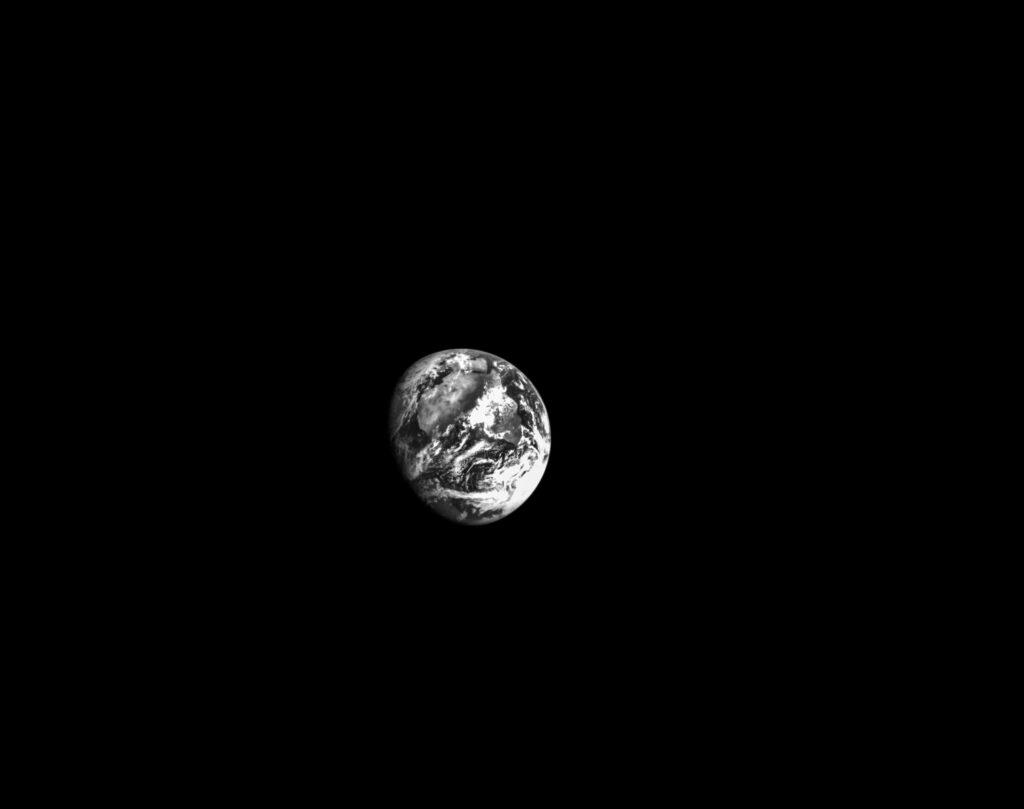
NASA’s Orion capsule made a blisteringly fast return to Earth from the moon Sunday, parachuting into the Pacific Ocean off of Mexico to conclude a test flight that should clear the way for astronauts on the next lunar flyby.
The incoming capsule hit the atmosphere at Mach 32, or 32 times the speed of sound, and endured reentry temperatures of 5,000 degrees Fahrenheit before splashing down near Guadalupe Island. A Navy ship quickly moved in to recover the spacecraft and its silent occupants — three test dummies rigged with vibration sensors and radiation monitors.
NASA hailed the descent and splashdown as close to perfect. The space agency needed a successful splashdown to stay on track for the next Orion flight around the moon, which is currently targeted for 2024. Four astronauts will make the trip, which will be followed by a two-person lunar landing as early as 2025.
The Orion capsule that landed Sunday was the first flight of NASA’s new Artemis moon program, named after Apollo’s mythological twin sister.
Tonya Ladwig, Lockheed Martin’s Orion program manager, watched the splashdown from a Highlands Ranch school gymnasium with hundreds of coworkers and family members who worked on the capsule.

The crowd watched intently as mission control updated every step of Orion’s descent. When the capsule splashed down into the Pacific, the crowd erupted into cheers and applause.
“It's a great victory for Lockheed Martin and for NASA and for a ton of employees in Colorado,” Ladwig said. “We [have] about 560 that currently work on the Orion Mission out of Colorado, but there are many more that have supported it over the last decade or so in the design and engineering of this spacecraft.”
The next Artemis mission will be the first lunar mission in over 50 years. The data collected from this unmanned mission is vital for the success of the next Orion flight. Denver’s Lockheed Martin staff will once again play a major role in bringing Americans back to the moon.
While no one was on the $4 billion test flight, NASA managers were thrilled to pull off the dress rehearsal, especially after so many years of flight delays and busted budgets. Fuel leaks and hurricanes conspired for additional postponements in late summer and fall.
Getting Orion back intact after the 25-day, 1.4 million-mile flight was NASA’s top objective. With a return speed of 25,000 mph — considerably faster than coming in from low-Earth orbit — the capsule used a new, advanced heat shield never tested before in spaceflight. To reduce the gravity, or G loads, it dipped into the atmosphere and briefly skipped out, also helping to pinpoint the splashdown area.
“All of the post-flight analysis, we demonstrated the heat shield protected us in the lunar return velocities. So all of that helps us get on the path for our crewed flight and Artemis II in the next couple of years,” Ladwig said.

Orion beamed back stunning photos of not only the gray, pitted moon, but also the home planet. As a parting shot, the capsule revealed a crescent Earth — Earthrise — that left the mission team speechless.
Nottingham Trent University astronomer Daniel Brown said the flight’s many accomplishments illustrate NASA’s capability to put astronauts on the next Artemis moonshot. The space agency expects to announce the crew within the next six months. Orion, meanwhile, should be back at Kennedy by the end of this December for further inspections.
“This was the nail-biting end of an amazing and important journey for NASA’s Orion spacecraft,” Brown said in a statement from England.
Reporting contributed by Marcia Dunn, Associated Press









